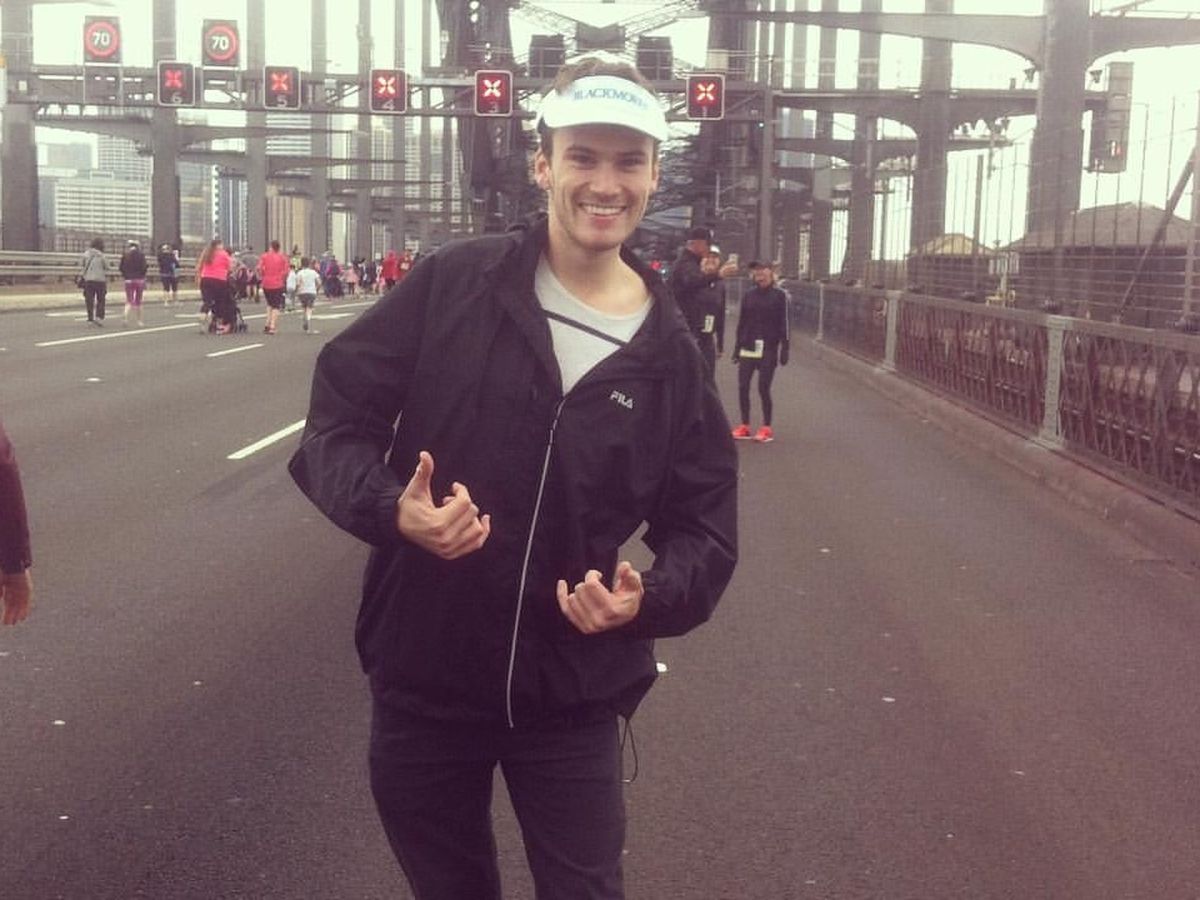5 years ago in the sunny city of Sintra in Portugal, I dove into the ocean, hit my head on a sandbank and suffered a C5 spinal cord injury. In that moment my life changed completely. I became a tetraplegic and spent 6 months in hospital learning to the most basic things again. I learned how to write again (I was actually left handed for a couple of weeks while my right hand caught up), learned to feed myself again (while ruining many of dad's shirts in the meantime) and learnt to walk again. Miraculously, I walked out of the hospital , something I wasn't sure I would ever be able to do. Leaving Prince of Wales Hospital in 2015
Leaving Prince of Wales Hospital in 2015
In the years that followed I became more and more acquainted with my injury. I rode the highs and lows of each stage of recovery but was grateful each and every day for the function that I had regained. I learned to stop saying "I wish I had..." and learned to say "wow I'm so grateful to have...". That did not come over night and was a hard switch to make. In the years after a spinal cord injury, it's thought that the first 2 years are when people will make the most of their natural recovery. Having spoken to a stack of people about this, and experiencing it myself, it's clear that changes still occur after 2 years. Even today I still feel like my legs get a bit stronger, that I can lift my arm just a degree higher or my spasticity is reduced every so slightly and I realise how grateful I am. No matter how small the change is, every little bit counts.
5 years on, I made massive strides and am completely independent. I have finished my Bachelor of Advanced Science at UNSW and am starting a Doctor of Medicine next year at Notre Dame university. Last year for my final honours research year I had the chance to be part of the spinal cord injury research team at Neuroscience Research Australia investigating one of the newest ways to stimulate leg muscle activity with the aim of walking. My thesis focused on transcutaneous spinal cord stimulation which entails putting electrodes on the skin over the spinal column and sending electrical currents to the spinal cord. Giving an electrical current to the spinal cord essentially "jazzes" up the system making everything a lot more excitable. The walking centres are excited by the electrical current and is able to produce muscle activity. I have had the chance to work alongside some of the best minds in this field and contribute to a research area that I am super passionate about.
First time walking after the accident. My physio Liz (on the right) is one of the supervisors for my research project. Being a back model for some photos showing what transcutaneous spinal cord stimulation involves.
Being a back model for some photos showing what transcutaneous spinal cord stimulation involves.
To celebrate 5 years of walking and to support the amazing research that I have been so fortunate to be part of, I've committed myself to walking further than I have ever walked - a half marathon (that's 21.1 kms) to raise $10,000 for SpinalCure. These guys support seriously great research that is having real impact on the lives of people with spinal cord injury. The money from this fundraiser goes to supporting walking studies that are helping people get back on their feet. SpinalCure will also be supporting the world's first international trial using transcutaneous spinal cord stimulation over 12 weeks to investigate its effects on walking in people with spinal cord injury. Like I experienced, even if it's just being able to stand up for a minute or take only one step, the impact that this newfound ability is enormous. It makes all the difference. Your sense of hope is reignited and it makes you hungry for more. I want everyone with a spinal cord injury to make those gains and that's why I'm passionate about supporting this cause.
Any donation however large or small is so very appreciated. Of course, Covid has certainly tightened the budget and understandably monetary contributions may not be possible. Not to worry! Join me on the January 16th for stroll, either a walk or a roll, however you choose to go. Be that just 500m to get a coffee at 7am or the kilometres that many will complete doing last minute Christmas shopping, I'll be so happy to see each of you. You can join me in person (CovidSafe measures permitting) or online by simply using the hashtag #HalfMarathon4SpinalCure.
Lastly, I plan on taking a tour around Sydney city. Travel certainly hasn't been a thing recently so for all those overseas this is an opportunity to see the sights of Sydney at their best! I'll be passing through Sydney's CBD on my way to the Sydney Opera House, then through the beautiful botanical gardens, up Oxford st where Mardi Gras takes place, then off to Bondi Beach, down to Coogee Beach and then finally heading to Prince of Wales Hospital and Neuroscience Research Australia where the amazing research happens!
Looking forward to sharing this experience with all of you! The map of the half marathon
The map of the half marathon
From SpinalCure:
We aim to get people out of their wheelchairs and back on their feet! SpinalCure is Australia's premier organisation dedicated to finding a cure for spinal cord injury through the funding and promotion of medical research. Thank you in advance for your contribution to this cause which means so much to us.
https://www.spinalcure.org.au/

